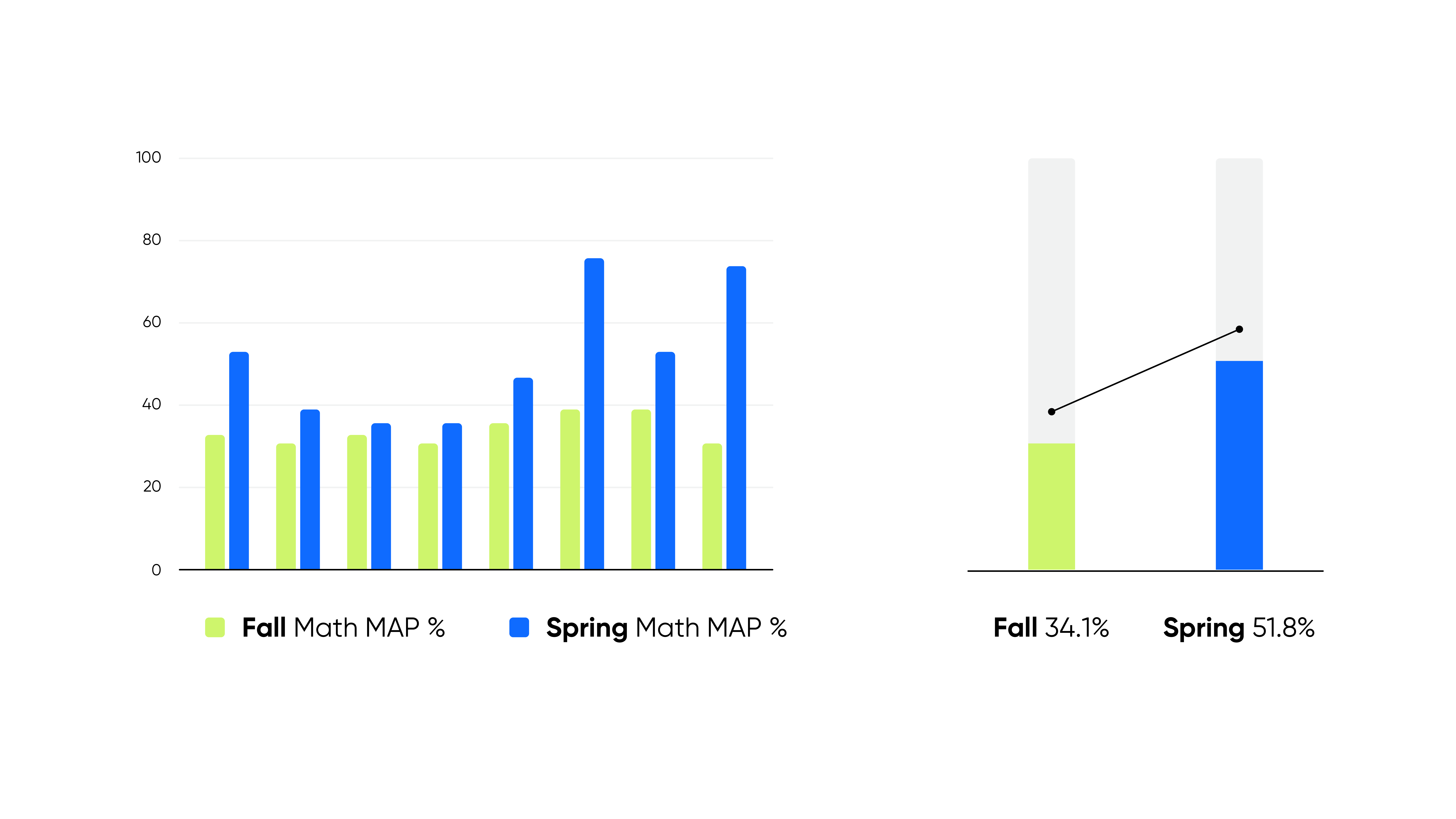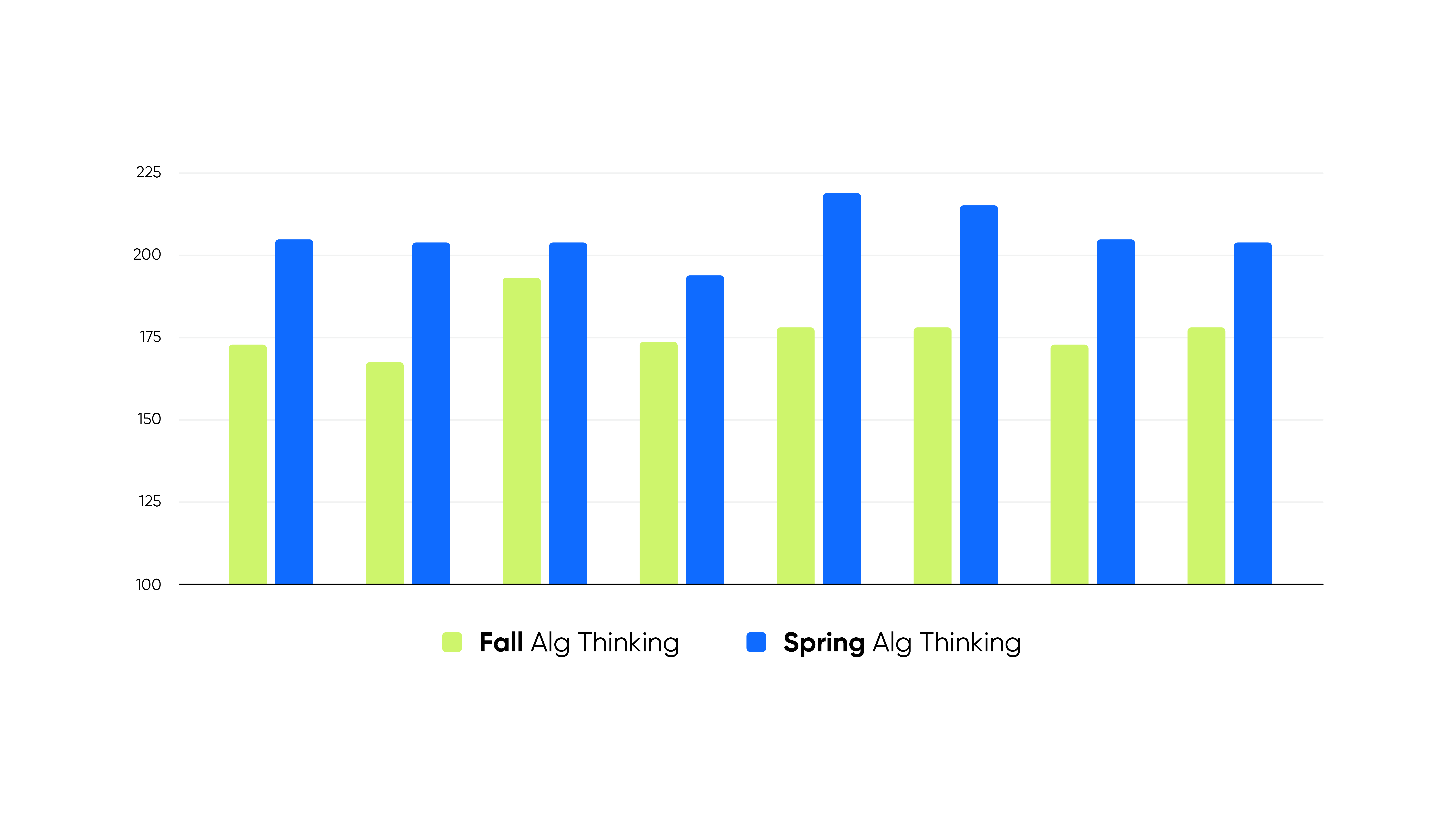.png)
Mike Afdahl is an educator full of curiosity and passion who has created lifelong learning experiences for his students. He currently is the Coordinator of Technology Services at Northwest Georgia RESA where he supports the instructional and technology goals of 17 districts in Northwest Georgia. He has served as a math teacher, academic coach, and director of technology, but "Dad" is his favorite title and responsibility.
.png)
Mike joined us at our Skill Summit in June 2022, a three-day event focused on computer science professional development for administrators representing districts throughout the nation.
At Skill Summit, Mike heard one sentence that stuck with him: If a student takes computer science (CS) it increases their test scores by 10%. That thought gnawed at him, and here is why. When Mike was a math coach he was in charge of creating extended learning time in the school day which was an additional 30-minute block set aside for students who needed math remediation. Halfway through the year, he said he felt like he was “watching paint dry.” Why is that? Because he was taking a subject these students really struggle in and likely don’t enjoy and giving them more of it.
He kept thinking, “Is this the answer? Is the answer to a struggling math student more math?” He always felt that there might be a different way. So when he heard, “If a student takes computer science it increases their test scores by 10%,” he knew he needed to act on that information and see for himself.
The Computer Science Experiment Begins
Mike’s experiment began. He approached a math teacher and asked to work with a handful of kids struggling with math. He wanted to see if he could, through computer science (CS), retrain their brains to be more receptive to mathematical concepts. His hypothesis: computer science and computational thinking will unlock the brain to better understand mathematical concepts.
His friend agreed and he was granted 30 minutes on Fridays before the school bell rang to meet with 8 third-grade students teaching them CS concepts.
Who were these 8 students?
- Targeted for math remediation.
- From 7 different math teachers. *Important, because he wanted to see if learning CS made an impact rather than a specific teacher.
- From 4 different countries.
- 5 different states.
- 5 females and 4 males.
To track growth he analyzed their MAP and State Assessments. With this group of students, their fall Math MAP normed average achievement percentile was 34.1%.
The main CS concepts of computational thinking he wanted to teach were:
- Decomposition: taking a big problem and breaking it down into smaller parts.
- Pattern recognition: observing and analyzing data to spot recurring patterns or trends.
- Abstraction: looking at a problem and removing unnecessary information (very applicable in math).
- Algorithm design: learning step-by-step processes like baking a cake or long division.
The Process

From magic tricks to Tic Tac Toe to puzzles to building HTML websites on Skill Struck and even to drones he engaged these children in CS the entire year. There were times they struggled. There were concepts that would take longer to grasp than expected and he would remind himself that they are struggling math students, they are going to struggle with the math.
.png)
He chose to chase progression, not perfection. “As long as they were moving forward, it didn’t have to be perfect,” Mike said.
.png)
With computer science, students have the opportunity to bring their interests into their projects. Mike found that the students really engaged in building their HTML websites and could see their unique personalities and backgrounds shine through.
If you would like an in-depth look at his process and how he taught these concepts you can watch the seminar he gave at ISTE in 2023. He goes into greater detail about the learning approach and explains the activities he did with these students.
The MAP Results
Remember in the fall these students averaged 34.1% for math, in the spring they averaged 51.8% meaning during the school year these students jumped up a remarkable 17.7%

“They also do math as a median growth percentile, so they are measuring their growth with their peers who also scored ~34% in the fall, and how well did they score in comparison to them in the spring. If they were normal average kids they would have been in the 50th percentile but they hit an average of 76%! Some were higher or lower but every one of the kids was above average and we were excited about that,” Mike said.

He was mostly interested in looking at his student's Algebraic Thinking because it most correlated with computational thinking. Here are some interesting findings from the study:
- The national average for third graders in the fall was 188.
- This group’s average in the fall was 175. (This is about one grade level below. Students grow about 13 points in a typical year)
- The national average in the spring was 201.
This group's average in the spring was 206. (31-point growth in one year!)

These students in one year experienced over two years of growth in algebraic thinking. Remember, Mike wanted to see if computational thinking could change their brain and unlock something within them to be able to receive math instruction. These results show that his hypothesis was correct.
Mike said, “Now as they go into 4th grade they are equipped in their math classrooms not just with better math knowledge but they have better math computational skills and better able to receive instruction. Which results in lifelong progress.”
State Assessment Results
These students' average Fall Predicted Score was 494 but their actual State Performance score in the spring averaged 525. Georgia breaks scores into different levels:
Level 2: 475-524 is qualified as Developing
Level 3: 525-574 is qualified as Proficient or on grade level.
In the spring these students were developing in Level 2 and by the fall were in Level 3 and back on track with their grade level.
Why does this work?
Mike believes this works because when you compare the Standards for Mathematical Practice with Computational Thinking you can find a lot of overlap.

Beyond the Data Results
We recognize that this is a small sample size but find a lot of inspiration from Mike and his students. One of the golden moments of the whole experience for Mike was at the end-of-year showcase where they invited the teachers of these special students to come and see what they have been learning and working on.
He shared with us a particularly inspiring interaction between a student and her teacher, he said: “[A student] showed her teacher how she was able to build her puzzles and there was this moment of just, I don’t know how to describe it, just beauty. Because here I have a student targeted for math remediation and what is she doing right now with her teacher? She is a teacher! She is teaching her teacher how to code! Her teacher said, ‘I have no idea how to do any of this. This is amazing!’ The confidence this moment can give her is just immeasurable.”
.jpg)
At the end of the year, Mike asked this same student how she felt about her CS class and she responded, “I’m really excited, I want to do computer science!”
This is a moment worth celebrating because here is a girl who wouldn’t have been shown a CS class opportunity until 9th grade and she now sees it in her trajectory. All of these students, because they have learned basic CS skills at a younger age, have a higher likelihood of enrolling in those CS classes when they are offered. We believe offering computer science education to younger students is integral in boosting high school CS enrollment in the future and diversifying the student population in terms of ethnicities, genders, and backgrounds in those classes and careers.
Experiment Takeaways
Traditionally, these struggling math students would have spent the year doing more math. Mike's conclusion from this year of CS is that introducing computational thinking to struggling math students is more beneficial than traditional math remediation.
We understand that teachers are overwhelmed with the many demands they are required to meet and have built our platforms with teachers in mind. Mike shared, “There are amazing partners, and I’ll speak to Skill Struck that have things in a box that you can just show your teacher and put it out there and they can do it. I met four times a month and they had lesson plans for four times a month.”
We are thrilled to be partners with Mike and honored to be a part of this CS journey. We are amazed by the students involved and the hard work they put in this year. We believe coding is for everyone and know our dream is realized through passionate educators like Mike Afdahl.
If you would like to learn more about Skill Struck, schedule a call with us here.
Leave Your Comment Here